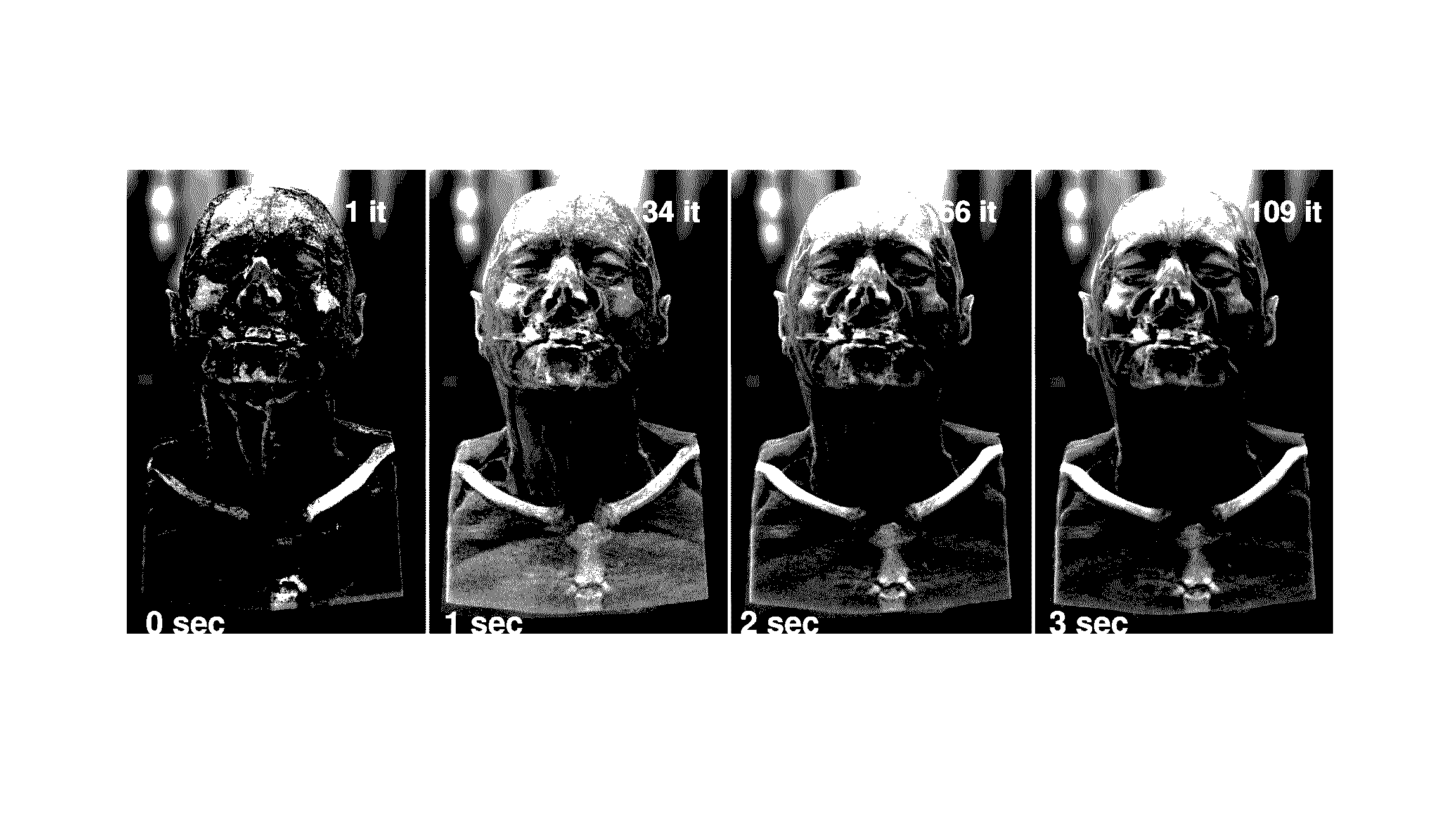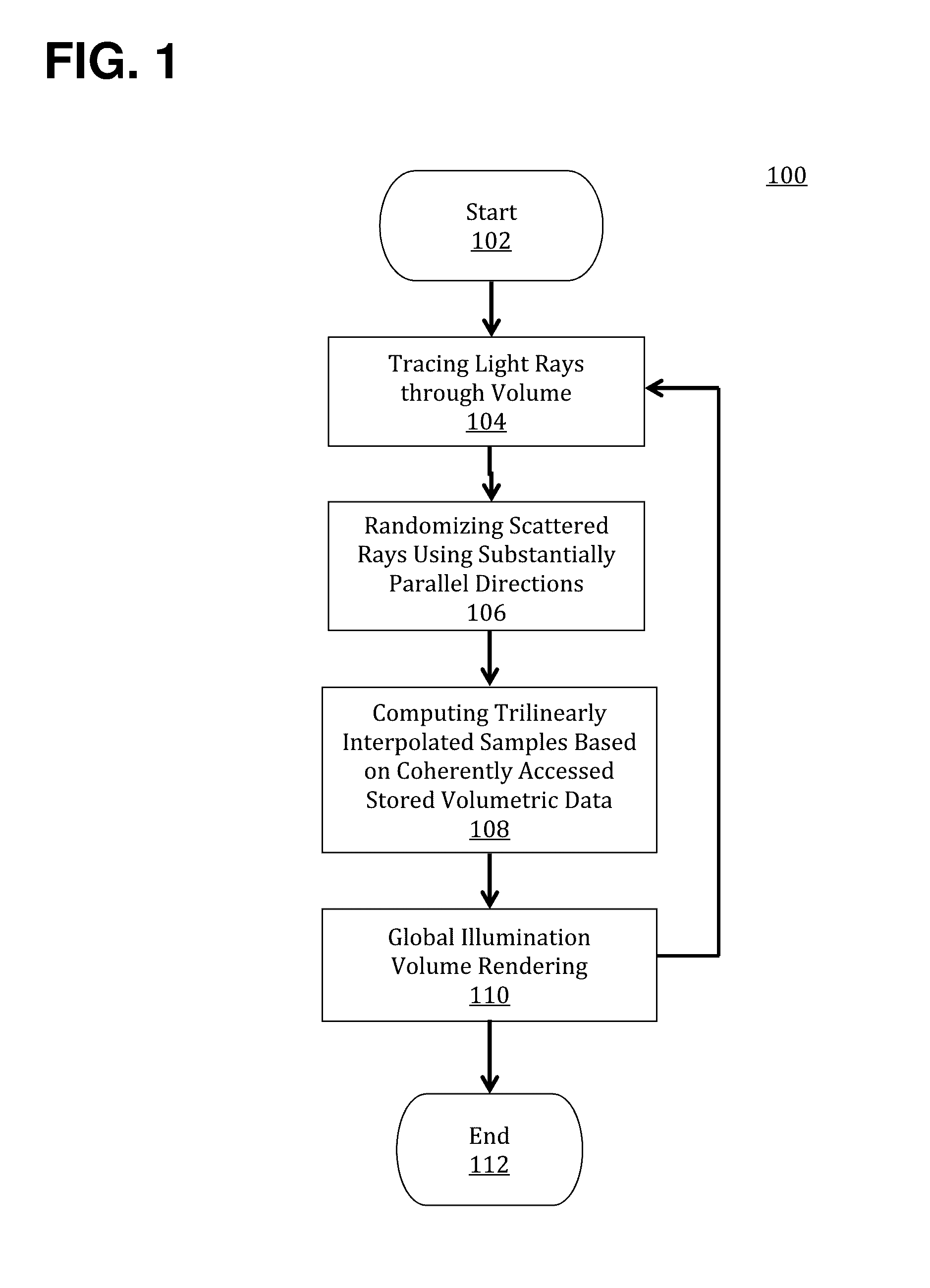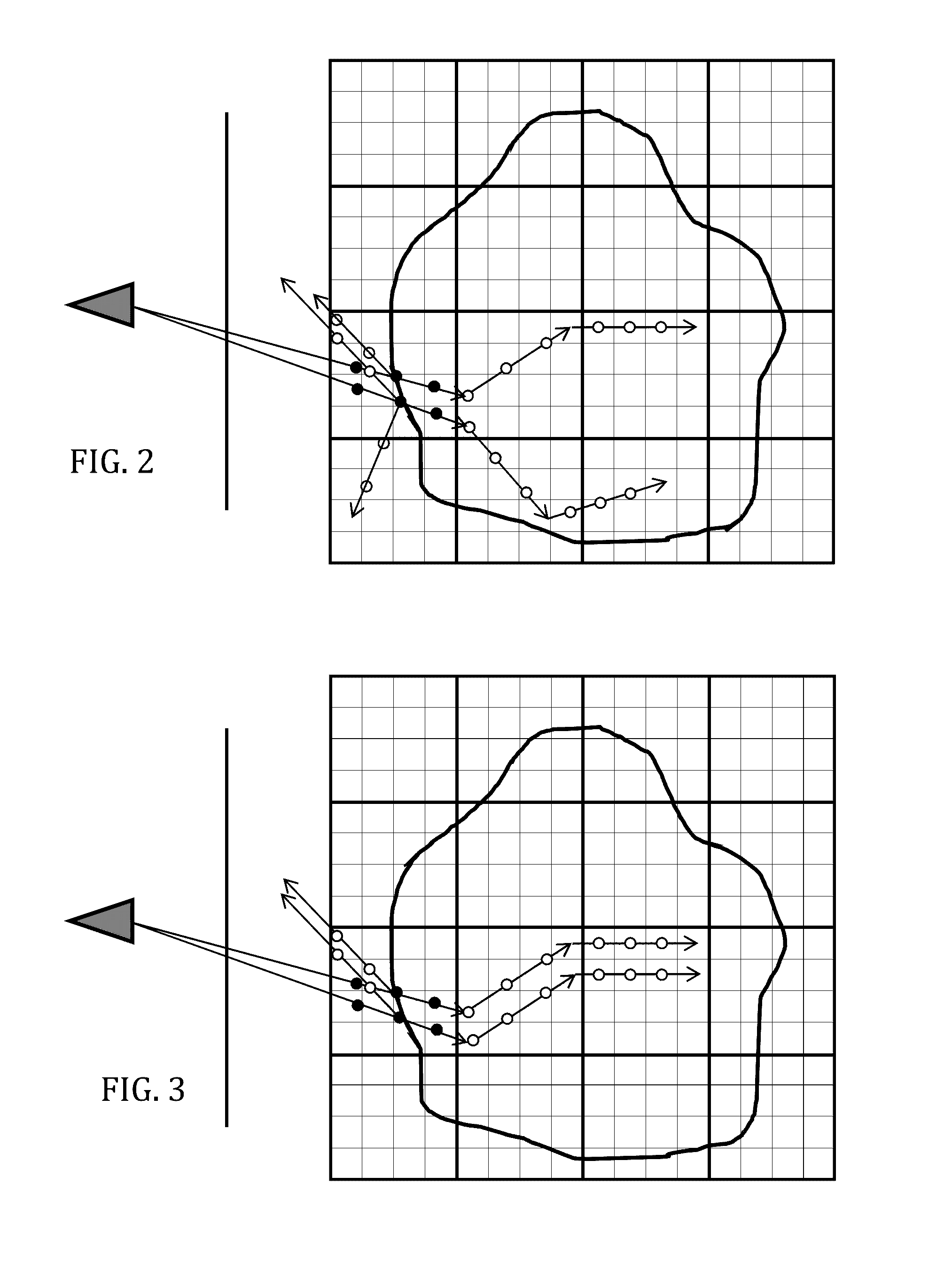Coherent Memory Access in Monte Carlo Volume Rendering
- Summary
- Abstract
- Description
- Claims
- Application Information
AI Technical Summary
Benefits of technology
Problems solved by technology
Method used
Image
Examples
Embodiment Construction
[0021]Efficient methods for the computation of interpolated samples along scattered rays have been discovered and are described herein. Methods in accordance with the present teachings may be used to reduce processing time in Monte Carlo path tracing of three-dimensional volume data by reducing the time that it takes a parallel processor (e.g., a GPU or multi-core CPU) to access voxel data when computing interpolated samples along the path of randomly scattered rays used for global illumination. Methods in accordance with the present teachings use a pseudo-random scattering scheme that is common for all the ray paths traced in parallel through each image pixel and scattered within a volume during each iteration, forcing localized alignment between rays. This constrained alignment results in memory access patterns that maximize cache coherency and improve rendering speed.
[0022]Although conventional Monte Carlo path tracing may be used for rendering volumetric data with global illumin...
PUM
 Login to View More
Login to View More Abstract
Description
Claims
Application Information
 Login to View More
Login to View More - R&D
- Intellectual Property
- Life Sciences
- Materials
- Tech Scout
- Unparalleled Data Quality
- Higher Quality Content
- 60% Fewer Hallucinations
Browse by: Latest US Patents, China's latest patents, Technical Efficacy Thesaurus, Application Domain, Technology Topic, Popular Technical Reports.
© 2025 PatSnap. All rights reserved.Legal|Privacy policy|Modern Slavery Act Transparency Statement|Sitemap|About US| Contact US: help@patsnap.com



